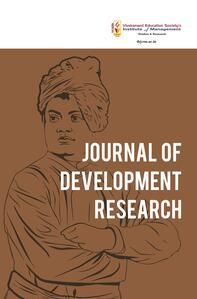
1L. J. Institute of Management Studies, L. J. K. University, Ahmedabad, Gujarat, India
Creative Commons Non Commercial CC BY-NC: This article is distributed under the terms of the Creative Commons Attribution-NonCommercial 4.0 License (http://www. creativecommons.org/licenses/by-nc/4.0/) which permits non-Commercial use, reproduction and distribution of the work without further permission provided the original work is attributed
Financial inclusion was the most challenging mission as far as the economically weaker sections of society in India. Microfinance was given to the underprivileged for sustaining themselves and starting their own businesses. However, a number of operational and legal barriers that threatened the efficient operation of microfinance institutions (MFIs) restrained its growth. The purpose of this study was to understand the macro and micro challenges involved in the delivery of microfinance services in rural India. For the study of macro and micro issues faced by various institutions in providing microfinance, secondary data collection and informal interviews were done. The effective execution of delivery methods for microfinance was investigated in this article along with techniques that addressed the problems mentioned. In other words, the delivery challenges explained the macro and micro issues that different organisations encountered when delivering microfinance. Strategies were discussed making it workable and adoptable by various institutions participating in microfinance to counter or tackle the macro and micro delivery challenges faced. The findings showed the difficulties of people from rural areas, their inaccessibility to microfinance and the inability of MFIs in controlling transaction costs. The article has highlighted ways to provide as many rural residents as possible with the necessary credit money.
Challenges, delivery, microfinance, politics, strategies, structure
Asian Development Bank. (2000). Finance for the poor: Microfinance development policy. http://www.adb.org/documents/finance-poor-microfinance-development-strategy
Cheston, S., & Kuhn, L. (2002). Empowering women through microfinance. UNIFEM.
Das, V. (2006). Indian microfinance sector: The road ahead. In Towards a sustainable microfinance outreach in India: Experiences and perspectives (p. 131). Microcredit Innovations Department, NABARD.
Ghosh, R. (2005). Microfinance in India: A critique. Working Paper Series.
Kothari, V., & Gupta, N. (2008). Micro credit in India: Overview of regulatory scenario. http://www.vinodkothari.com/Micro%20Credit%20in%20India%20-%20Overview%20of%20the%20Regulatory%20Scenario.pdf
Mishra, N., & Chandra, M. (2010). Microfinance in Indian banking industry and its future (pp. 625–628). IEEE Publication.
NABARD. (2012). State of microfinance in India. http://www.nabard.org/departments/pdf/Status%20of%20Microfinance%202011-12%20full%20book2.pdf
Nair, T., & Tankha, A. (2013). Microfinance state of the sector report 2013. Sage Publications. www.sagepublications.com
Palmkvist, F., & Pei Jun Lin, R. (2015). Women’s empowerment through microfinance self-help groups: A systematic literature review [Bachelor thesis, Aarhus University, School of Business and Social Sciences].
Reddy, C. H. V. K., & Noorbasha, A. (2012). Impact of microfinance on income and employment generation: A case study of Andhra Pradesh. Scholar’s Press.
RBI Banking Statistics. (2003). https://www.rbi.org.in/scripts/WSSView.aspx?Id=5649
Shankar, S. (2007). Transaction costs in group microcredit in India. Management Decision, 45(8), 1331–1342.
Sharma, M. (2011). Microfinance in India: Is business correspondent the way forward? MicroSave India Focus Note 75. http://microsave.net/files/pdf/IFN_75_Microfinance_in_India_Is_BC_the_Way_Forward.pdf